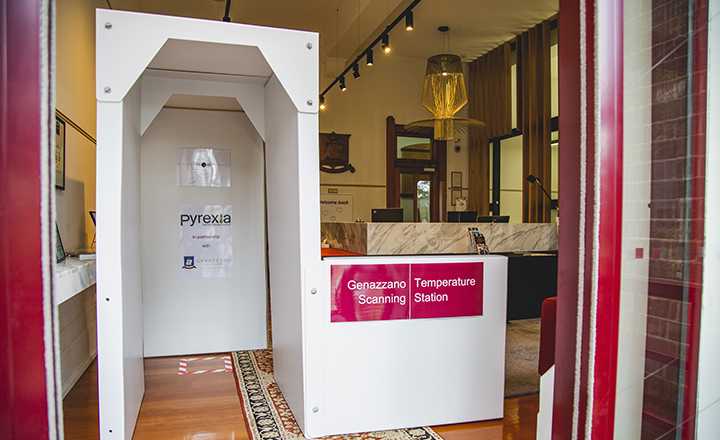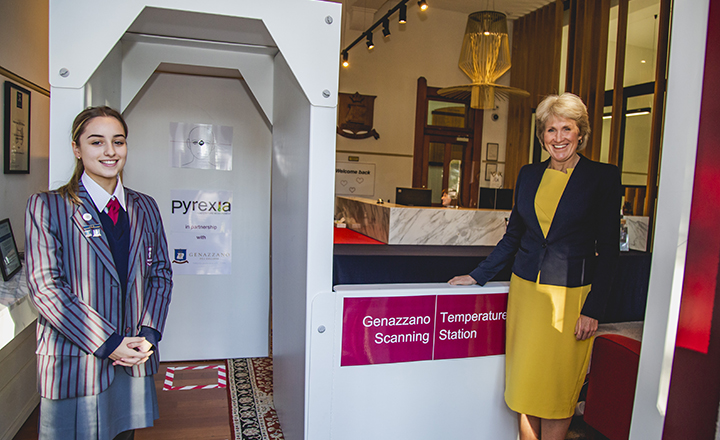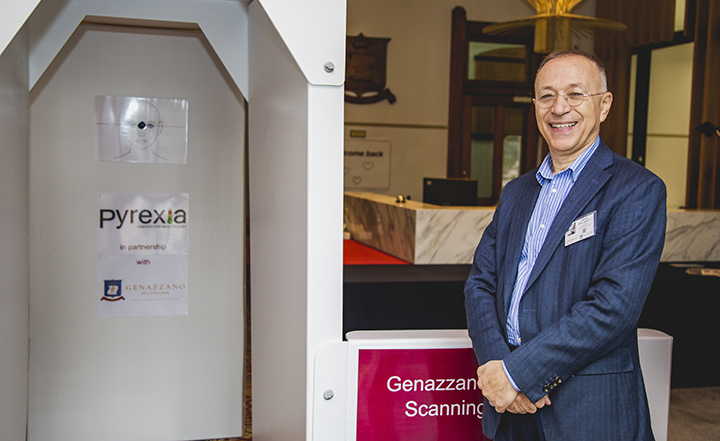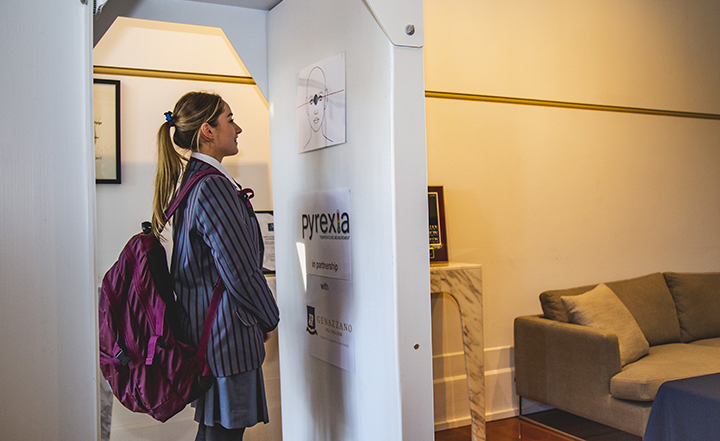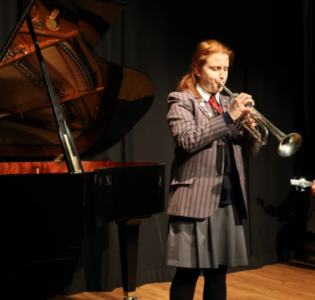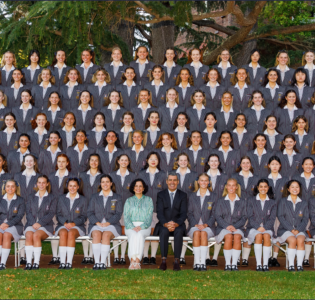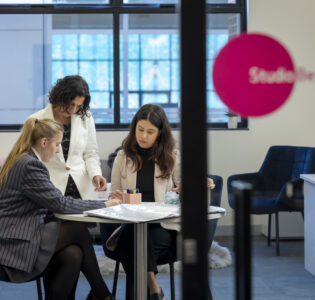Genazzano implements temperature scanning station designed by Year 12 student
27 May 2020
With the return of teachers and students from Prep to Year 2 and Years 11 and 12 this week, Genazzano FCJ College has installed a temperature scanning station to detect members of its community who may unknowingly have a high temperature.
Although return to school guidelines do not require schools to take the temperature of students and staff each day, the station can provide an added level of comfort for students and staff who wish to use it.
Designed by Year 12 student, Stephanie Angelico, along with her father, Bruno, the station features an infra-red camera which takes the temperature of your tear duct by looking into the eyepiece.
Its advanced application, closer to the eye, gives a better reading of your internal body temperature rather than an average from the temperature of your face. The station will allow easy identification of any College community member who has a fever and needs to be sent home.
The idea originated from the Angelico family just late last week when the State Government announced that education was returning on campus.
“It started with Stephanie having extra time at home once she had finished her learning at a distance”, explains Mr Angelico.
“We were sitting around the dinner table and I said let’s build this… I showed her the twenty-five-thousand-dollar unit from the hospital where my wife Daniela works, and we designed the tunnel and worked out how people would enter and exit the station”.
“We had to find a camera which I sourced through a family contact and then Stephanie laid it all out, with one person inside, one person outside and at 1.5 meters high. From there we got the drawings made”.
Stephanie and her mother came up with the name and logo and worked with Mr Angelico’s work design agency to design the logo and website.
“It was about taking Stephanie through the process of engaging in a business idea and having an entrepreneurial mindset. It also aligns nicely with her Visual Communication Design subject which focuses on informing people’s decisions about where and how they live and what they buy and consume”.
The subject provides students with the opportunity to develop an informed and discriminating approach to understanding and using visual communications, and nurtures their ability to think creatively about design solutions.
Design thinking, which involves the application of creative, critical and reflective techniques, processes and dispositions, supports skill development in areas beyond design, including science, business, marketing and management.
Stephanie came in to the College to help install the station on Monday night and once designed started looking into the costs and manufacturing process to establish what price to sell the units at. Stephanie’s brother researched delivery vans and how long it would take to assemble a unit, to help work out delivery costs – it’s been a project that the entire family has been involved in.
The nuts and bolts are plastic so anyone can assemble it. It’s also sustainable and made in Australia from recycled plastic Corex panels.
The family’s aim was to design something that could be easily rolled out across the country. It had to be easy to assemble, modular, cost effective and able to be mass produced.
“You can move the panels to either side, they are very flexible, versatile and multipurpose and can be configured into any shape”, said Stephanie.
“The panels are made from recycled plastic; are easy to assemble, manufacture, cut and manipulate; and the units can be turned around and delivered to businesses, including schools within two weeks”.
The infra-red camera is wired into a computer and displays the image on the computer screen. It uses the latest infra-red camera technology that was designed after SARS in 2008 to measure the temperature from the tear duct which is more reliable.
“It’s been a great process to work through with Dad and the rest of the family. It’s given me great insight into how to get a new idea up and running and how to apply design thinking in a practical way that benefits our community”, she said.
The simple filtration system is for use at the start of the return to school process to provide parents and teachers piece of mind that those entering the school do not have a temperature.
This has been supported by Principal, Ms Karen Jebb who shared that the health, safety and wellbeing of the College community is of the utmost importance.
For more information visit https://www.pyrexia.com.au/.
